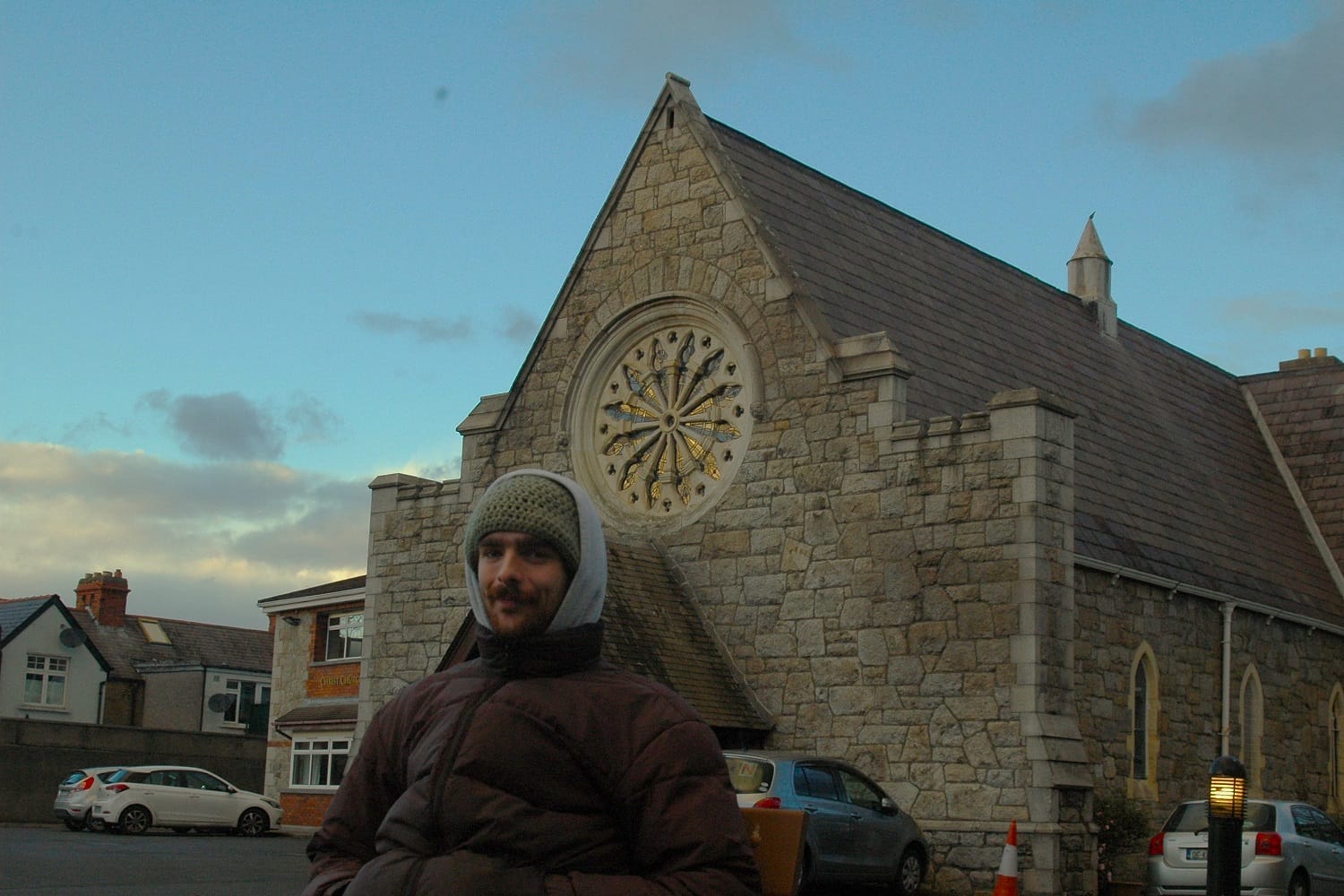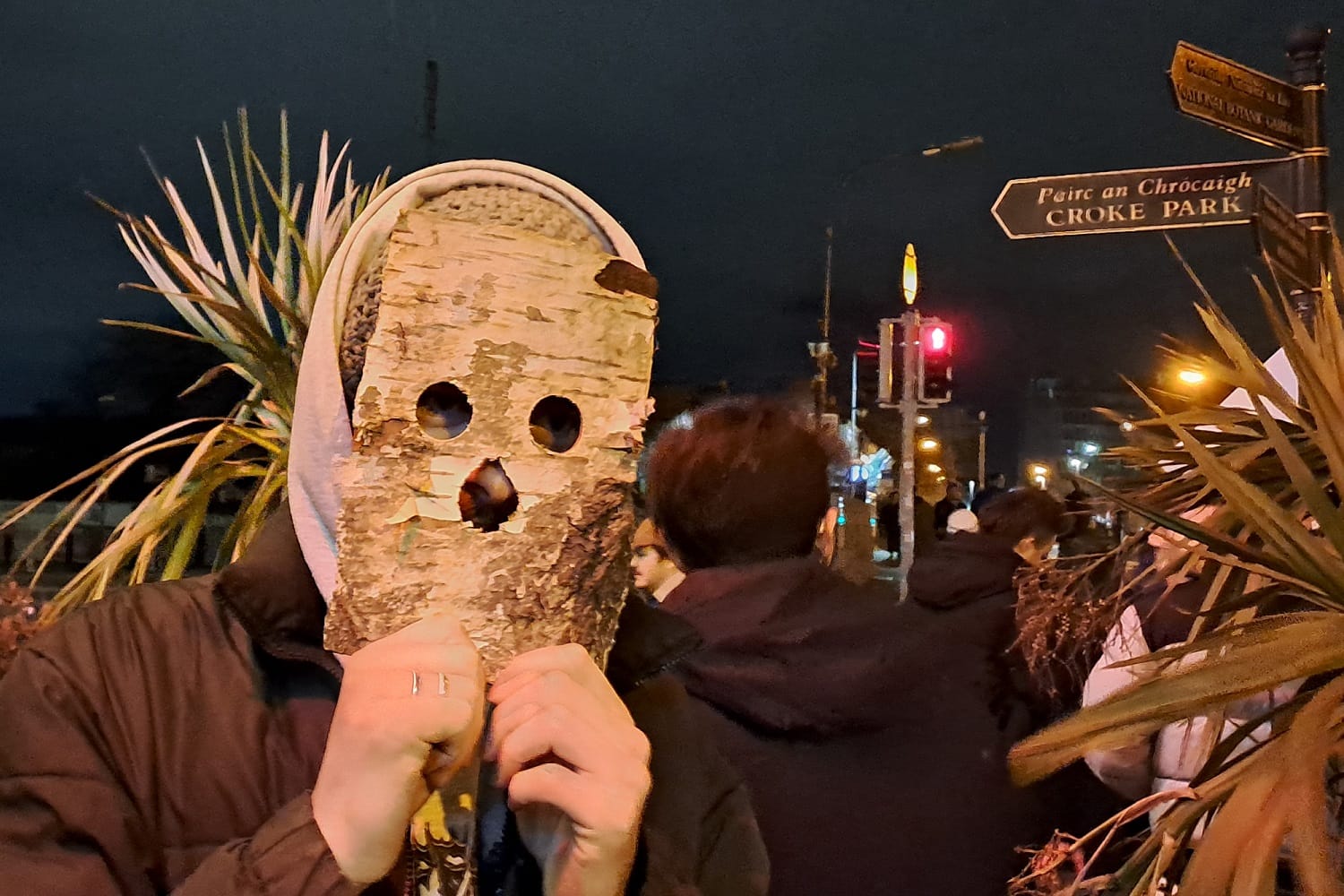What would become of the Civic Offices on Wood Quay if the council relocates?
After The Currency reported the idea of the council moving its HQ, councillors were talking about and thinking through the pros and cons and implications.
Rory Sweeney “is like a sorcerer when he’s bent over his laptop”, says collaborator Ethan Soost, a rapper from Philadelphia.

Midway through an electropunk set, the soundsystem at the Racket Space music venue howled with feedback.
As the wails bounced off the walls of the basement in Phibsboro, the Swedish artist Ingmar Kviele, or NITEFISH, had to call a halt to his performance.
It was almost 2am on a Saturday night, as he asked if anyone had a spare sound card on them.
Producer Rory Sweeney leapt up from the crowd onto the stage to help keep the night’s momentum. Pulling on a pair of headphones, he launched into a DJ set of pulsating dance numbers.
He cycled through four of his unreleased tracks – remixes and collaborations with other electronic artists – with dense bass lines and beats dripping like water in a sewer.
Hunched over his rig, Sweeney bobbed his head wildly.
Ten minutes later, Jack Fanciulli, the experimental guitarist known also as Asa Nisi Masa, joined him.
The duo, who collaborated on Sweeney’s recent double album Trash Catalogue, spun Missy Elliott back-to-back with gabber tracks and improvised around an accidental collage of screeches, treating the glitch as a bridge between sets.
Anything that pushes the envelope is welcome, Sweeney says. “I might throw in a Spotify ad. I usually try to keep it ridiculous.”
In five years, Sweeney has put out more than 20 EPs, albums and mixtapes.
From abrasively chaotic dance to ethereal soundscapes built upon samples from everyday life, his work is consistently unpredictable.
That variety is down to the slew of left-field artists he surrounds himself with, he says. “There is a real limit, music-wise, to what I can do. I really need other people to fill in the gaps and make it something interesting.”
“He’s like a sorcerer when he’s bent over his laptop,” said Ethan Soost, while cycling by Sandymount Square, the Wednesday before.
Soost, a rapper from Philadelphia who goes by Julia Louise KnifeFist, had just wrapped up a recording session with Sweeney.
The two have been in each other’s orbits since around 2018, when they would both drop by events in Jaja Studios, a DIY art space on Arbour Hill, Soost says.
They had bonded over niche fast-paced dance genres such as breakbeat, gabber and jungle, Sweeney says. “So we were just like, ‘Oh, let’s just make a song.’”
By then, Sweeney had been writing and producing music, mostly solo, since 2017, he says. “I was desperately trying to work with a lot of rappers in Ireland for years.”
They began to concoct tracks together. First was Soost’s single, “Adidas Body Bag”, which paired a minimalist bouncing beat with layers of vocals, spoken, bellowed and sampled until they resembled clattering sheet metal.
In the weeks leading up to the first national lockdown of the Covid-19 pandemic, they had the idea of starting an experimental rave collective, Bitten Twice, with Kilkenny-based producer Fomorian Vein.
The thinking, in part, was that a collective could get smaller experimental acts booked into clubs, Soost says. “But it also came from us wanting to collaborate with each other more, like an excuse to spend time with the people whose music you respect.”
They live-streamed gigs, and in August 2020, released Bitten Twice, Volume One, a digital hardcore compilation, featuring 9 artists and drenched in distortion, frantic beats and barking vocals.
It was an invigorating sound, says Fanciulli, aka Asa Nisi Masa. “I was into musical extremes, and when I heard their stuff, I felt I could do something like it, or feel part of something.”
But for Sweeney, feral rave was just one facet of an ever-expanding palate that he was building.
“He always has a lot of pokers in the fire,” says Soost.
An hour after his recording session with Soost wrapped, Sweeney sat over a cup of hot chocolate in Pete’s of Sandymount, a cafe by the square in the seaside suburb.
He wore a knitted olive green hat and a pale grey Julia Louise KnifeFist hoodie.
It had been a fruitful week. On the Monday, Sweeney put out a four-track grime mix-tape with the Belfast- and London-based rapper EMBY, having recorded the vocals just the day before.

Music production wasn’t Sweeney’s original plan, he says. Filmmaking was. “I always thought of music as a side thing until I went into film school and realised that I was just more into it.”
He enrolled in Dún Laoghaire Institute of Art Design and Technology in 2017.
There, as he played around with music production, he drew from the eerie and orchestral film scores, and experimented with warped hip-hop beats and jazz samples, he says.
His first and longest-running sonic partnership was with filmmaker and singer Pippa Molony, who he met in IADT and with whom he formed the multimedia collective, Pink Clouds.
He encouraged Molony to get into music, she says. “I would sometimes sing on some stuff, because somebody might need a track for their film, and they wouldn’t have the rights for that Hozier song.”
At first, he mostly produced ambient music, he says. “I didn’t start making club music until 2019, when I would actually go to clubs and was exposed to dance music that wasn’t just techno.”
The now defunct Jigsaw cultural space on Belvedere Court became a formative place for him, serving as the original base for Dublin Digital Radio and a venue for DIY live events, he says. “In terms of the music I heard there, it was life-changing.”
One night in late September last year, during the Dublin Fringe Festival, an audience at the Complex arts space off Capel Street sat in darkness before an empty stage.
After a few moments of silence, snippets of melodies began to pop, one-by-one, like a starry sky depicted purely in stereo.
The stage lit up, revealing dancer Nick Nikolaou who, for 60 minutes, delivered an interpretive dance “love letter” to Dublin’s queer club culture through his show Anatomy of a Night.
Sweeney was behind the soundscape of remixed pop and dance, drawing in hits such as Britney Spears’ “Toxic” and an 1980s remix of 10cc’s “Lot in Love”.
The musical backdrop was devised together, Nikolaou says. “Once I had listened to his music, I was like, okay, this is a person who clearly knows what they are doing.”
“He’s a deeply intuitive artist,” they say. “There’s intuition there that you don’t find a lot, and he really listened to what I would say.”
Nikolaou strutted, crawled and spun across the stage. Sweeney’s mullet rocked up-and-down in a booth towering above the audience.
“When I first showed him the show, the look on his face was so rewarding,” says Nikolaou. “To see this person, who is cool and young, being like, ‘Oh my god, this is so cool’ for my art, my dance theatre. It’s great. I love that.”
For each of the five performances, Nikolaou wanted the show to transition into a full-on two hour nightclub, with a different DJ performing each night, including Sweeney, Nikolaou says.
The idea was to showcase the versatility of the city’s queer and queer-adjacent scenes past and present, they say. “I wanted to highlight the youth as the future of this culture.”
Over five years, Sweeney has shifted between industrial dance music, Jersey club, a homage to the minimalist composer Steve Reich and a glitchy Christmas EP that samples big-band jazz and draws from the writings of cultural theorist Mark Fisher.
He became a bridge between music cultures in the city that may otherwise have been disconnected.
His dynamism compels artists to link up with him, says rapper Ahmed Karim Tamu, known otherwise as Ahmed, with Love. “Like, he can see in any genre the beauty and integrity of it.”
As well as performing on the jarring seasonal Jesus Tape Vol. deux: A Sandymount Christmas, Tamu rapped on Sweeney’s break-out single “Men on a Mission”.

It was, Tamu says, the first song they made together. “Ten minutes. Rory made it in ten minutes. He had a song he liked, made a loop, and because we were all into new wave Michigan rap, we thought, let’s make that type of beat.”
How Sweeney assembles a song can seem inexplicable and arbitrary, Tamu says. “He’ll make samples out of anything. He’ll just pick around, and say, ‘Here’s a sample of my ex-girlfriend,’ or a Japanese water-slide.”
“He’ll take anything,” says Tamu. “It’s really magical to watch.”
Ideas come from everywhere, Sweeney says. He has sampled a single a cappella performance by Pippa Molony across an entire album, and field recordings of a river in Brazil. He has used music by The Smiths, despite hating the band. “I just had one of their songs on my computer.”
As he sits in Pete’s of Sandymount, he raises a hand to indicate its bustling ambience. Sinatra’s “New York, New York” echoes through the Parisian-style interior.
“This, what we’re hearing now,” he says, “we could use that as a base.”